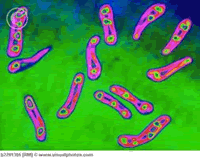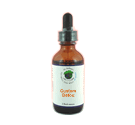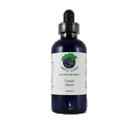 Arthropod/Vector
Bacteria
Chemicals
Fungus /Mold
/ Yeast Metals Parasites Virus Other Arthropod/Vector
Bacteria
Chemicals
Fungus /Mold
/ Yeast Metals Parasites Virus Other
|
Corynebacterium
The most notable human infection is diphtheria, caused by Corynebacterium diphtheriae. It is an acute and contagious infection characterized by pseudomembranes of dead epithelial cells, white blood cells, red blood cells, and fibrin that form around the tonsils and back of the throat. It is an uncommon illness that tends to occur in school-aged children, the elderly, immunocompromised people, and those with prosthetic devices such as heart valves, shunts, or catheters. It can occasionally infect wounds, the vulva, the conjunctiva, and the middle ear. It can also be spread within a hospital. Several species cause disease in animals, most commonlyC. pseudotuberculosis which causes caseous lymphadenitis. Some are also pathogenic in humans. Some attack healthy hosts, while others tend to attack the immunocompromised. The effects of infection include: granulomatous lymphadenopathy, pneumonitis, pharyngitis, skin infections, and endocarditis. Corynebacterial endocarditis is seen most frequently in patients with intravascular devices. C. tenuis is believed to cause trichomycosis palmellina and trichomycosis axillaris. C. striatum may cause axillary odor and C. minutissimum causes erythrasma (brown, scaly skin patches). Non-pathogenic species of Corynebacterium are used for very important industrial applications. These include: the production of amino acids, nucleotides, and other nutritional factors; bioconversion of steroids; cheese aging; and production of enzymes. Some species produce metabolites similar to antibiotics, anti-tumor agents, etc. One of the most studied species is C. glutamicum, whose name refers to its ability to produce glutamic acid in aerobic conditions. It is used in the food industry as monosodium glutamate (MSG) in the production of soy sauce and yogurt. Species of Corynebacterium have been used in the mass production of various amino acids including glutamic acid which is a popular food additive made at a rate of 1.5 million tons per year. The metabolic pathways of Corynebacterium have also been altered to produce lysine and threonine. So it is possible that you have one strain or another of this bacterial genus from the foods and supplements you take! This Quantum Formula antidotes the various species in the Corynebacterium genus. |
|



